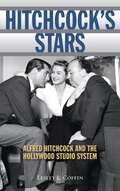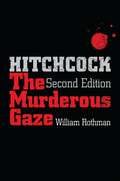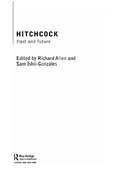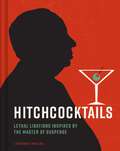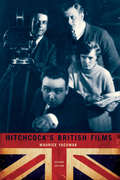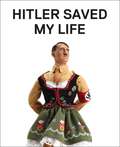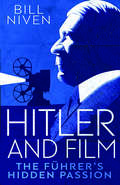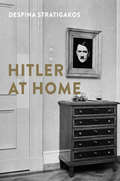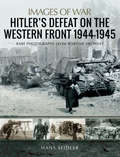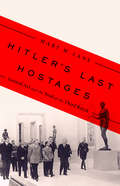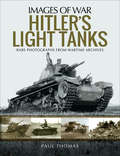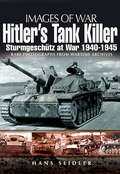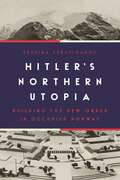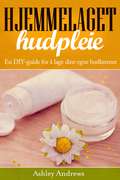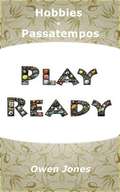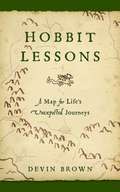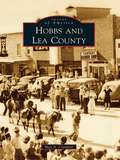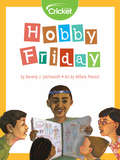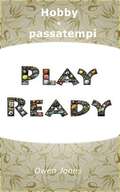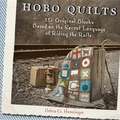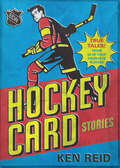- Table View
- List View
Hitchcock's Stars: Alfred Hitchcock and the Hollywood Studio System
by Lesley L CoffinAlthough he was a visual stylist who once referred to actors as cattle, Alfred Hitchcock also had a remarkable talent for innovative and creative casting choices. The director launched the careers of several actors and completely changed the trajectory of others, many of whom created some of the most iconic screen performances in history. However, Hitchcock’s ability to fit his leading men and women into just the right parts has been a largely overlooked aspect of his filmmaking skills. In Hitchcock’s Stars: Alfred Hitchcock and the Hollywood Studio System, Lesley L. Coffin looks at how the director made the most of the actors who were at his disposal for several decades. From his first American production in 1940 to his final feature in 1976, Hitchcock’s films were examples of creative casting that strayed far from the norm during the structured Hollywood star system. Rather than examining the cinematic aspects of his work, this book explores the collaboration the director engaged in with some of the most
Hitchcock, Second Edition: The Murderous Gaze (SUNY series, Horizons of Cinema)
by William RothmanFirst published in 1982, William Rothman's Hitchcock is a classic work of film criticism. Written in an engaging style that is philosophically sophisticated yet free of jargon, and using over nine hundred images from the films to illustrate and back up its critical claims, the book follows six different Hitchcock films as they unfold, moment by moment, from first shot to last.In addition to a thoughtful new preface and the original readings of The Lodger (1927), Murder! (1930), The 39 Steps (1935), Shadow of a Doubt (1943), and Psycho (1960), this expanded edition includes a groundbreaking new chapter—now the book's longest—on Marnie (1964), Hitchcock's most heartfelt yet most controversial film. Hitchcock never tired of quoting Oscar Wilde's line, "And all men kill the thing they love." Dark moods therefore prevail in the five original chapters, culminating in the reading of Psycho, but in demonstrating how Marnie overcomes, or transcends, the murderous aspect of Hitchcock's art, this new chapter balances the scales and gives an important new dimension to the book.With exemplary precision, Hitchcock, Second Edition shows how Hitchcock films express, cinematically, serious thoughts about such matters as the nature and relationships of love, murder, sexuality, marriage, and theater—and about their own medium. In so doing, it keeps faith with the idea that Hitchcock was a master, perhaps the master, of what he called the "art of pure cinema." However, insofar as it investigates philosophically the conditions of authorship in the medium of film, it is an auteurist study unlike any other. By attending to the films themselves and to the ways we experience them, rather than allowing some theory to dictate what to say about them, the book proves the fruitfulness of an approach that is open and responsive to the ways serious films are capable of teaching us how to think seriously about them.
Hitchcock: Past and Future
by Richard Allen Sam Ishii-GonzálesThis new collection of writings on Alfred Hitchcock considers Hitchcock both in his time and as a continuing influence on filmmakers, films and film theory. The contributions, who include leading scholars such as Slavoj Zizek, Laura Mulvey, Peter Wollen, and James Naremore, discuss canonical films such as Notorious and The Birds alongside lesser-known works including Juno and the Paycock and Frenzy. Articles are grouped into four thematic sections: 'Authorship and Aesthetics' examines Hitchcock as auteur and investigates central topics in Hitchcockian aesthetics. 'French Hitchcock' looks at Hitchcock's influence on filmmakers such as Chabrol, Truffaut and Rohmer, and how film critics such as Bazin and Deleuze have engaged with Hitchcock's work. 'Poetics and Politics of Identity' explores the representation of personal and political in Hitchcock's work. The final section, 'Death and Transfiguration' addresses the manner in which the spectacle and figuration of death haunts the narrative universe of Hitchcock's films, in particular his subversive masterpiece Psycho.
Hitchcocktails: Lethal Libations Inspired by the Master of Suspense
by Laurence MaslonNow, for the first time, enthusiasts of cocktails and Hitchcock can raise a glass and toast each of the legendry director&’s most iconic films, with more than two dozen original recipes for delicious, handcrafted cocktails. inspired by Hitch&’s most infamous scenes, settings, and characters.Murder and manners make for the ultimate mixture in the movies of director Alfred Hitchcock. In every one of his major pictures, characters down an alcoholic beverage or two—even in a film set on a lifeboat in the middle of the Atlantic Ocean. Hitchcocktails: Lethal Libations Inspired by the Master of Suspense features more than two dozen artisanal cocktail recipes inspired by such characters such as Norman Bates, Mrs. Danvers, Uncle Charlie, Marnie, and the ultimate stranger on a train, Bruno Antony. Cary Grant&’s elegant way around a cocktail shaker is traced from his would-be poisoner in Suspicion to his government agent with an intimate knowledge of hangover remedies in Notorious to his bourbon-addled ad man-on-the-run in North by Northwest. Author Laurence Maslon (who combined his passion for Broadway and cocktails in I&’ll Drink to That!, an award-winning Weldon Owen book from 2023) reveals the relationship between drinking and drama with anecdotes and fun facts, ranging from early Hitchcock espionage thrillers such as Secret Agent and The Lady Vanishes through his final films such as Frenzy and Family Plot. Chapters such as &“Wrong Place, Wrong Time;&” &“Foreign Climes;&” and &“Ice Maidens&” organize the drinks around famous motifs such as Hitchcock's iconic blondes and other unforgettable female characters. With easy-to-follow instructions, beautiful full-color photography of the cocktails by legendary photographer Joan Marcus, and rare film stills and posters from the movies themselves, Hitchcocktails: Lethal Libations Inspired by the Master of Suspense is the kind of perfect addition to a bar shelf or a bookshelf that any cinema fan would kill for.
Hitchcock’s British Films: Second Edition (Contemporary Approaches To Film And Media Ser.)
by Maurice YacowarA reissued classic that examines the structure and themes of each of Hitchcock's British feature films.
Hitler Saved My Life: WARNING—This book makes jokes about the Third Reich, the Reign of Terror, World War I, cancer, Millard Fillmore, Chernobyl, and features a full-frontal nude photograph of an unattractive man.
by Jim RiswoldWhen advertising legend Jim Riswold is stricken with leukemia and prostate cancer, he quits the business that made him famous to become a “fake artist,” creating a controversial body of work with a controversial cast of characters, from Hitler to Mao to Kim Jong-Il. It was a decision that would save his life.Advertising legend Jim Riswold is a Big F****** Deal. Ask him, he’ll tell you. But when Riswold is stricken with leukemia and prostate cancer (a two-fer!), the freewheeling adman quits making commercials, and starts making art. But not just any art—Hitler art. Mussolini art. Stalin-in-a-bathtub art. This is not a sad cancer story. This is a molotov cocktail of raunch and heart and 18-gauge biopsy guns. This is a taboo-busting laugh riot, a raspberry blown straight at dying-guy preciousness and monsters of all kinds—cancer and world-historical bad guys included. Be warned—contents of this book include: One profanity-spiked TEDx talk. Several very public, full-frontal dick picks. Two adorable children. Something called “Interferon Family Fun Night.” Jim Riswold leading a crowd of people in a rousing rendition of “Happy Birthday” to his oncologist. Relentlessly funny, and scorchingly subversive, this is a bruised and bruising memoir—it is also tubed, scarred, stapled, and irradiated. But here’s the secret: Jim Riswold, enfant terrible, the man Charles Barkley once called “a role model for morons,” is kind of a sweetheart. The wise-guy posturing is just a cover for his pulpy heart. Another secret: This book isn’t about Hitler. It’s about the beautiful, stupid, gross, foolish, and fantastic things we’re willing to do for love and family and not-dying. It’s about a guy who, with due respect to Lou Gehrig, considers himself the luckiest man on the face of the earth. Really, Jim Riswold owes cancer a thank-you. Thanks to cancer, his tombstone will no longer read: Here Lies That Guy Who Did That “Bo Knows” Commercial. Now, it will say Here Lies the Guy Who Put Cancer in Its Place—and Mussolini on a Tricycle.
Hitler and Film: The Führer's Hidden Passion
by Bill NivenAn exposé of Hitler’s relationship with film and his influence on the film industry A presence in Third Reich cinema, Adolf Hitler also personally financed, ordered, and censored films and newsreels and engaged in complex relationships with their stars and directors. Here, Bill Niven offers a powerful argument for reconsidering Hitler’s fascination with film as a means to further the Nazi agenda. In this first English-language work to fully explore Hitler’s influence on and relationship with film in Nazi Germany, the author calls on a broad array of archival sources. Arguing that Hitler was as central to the Nazi film industry as Goebbels, Niven also explores Hitler’s representation in Third Reich cinema, personally and through films focusing on historical figures with whom he was associated, and how Hitler’s vision for the medium went far beyond “straight propaganda.” He aimed to raise documentary film to a powerful art form rivaling architecture in its ability to reach the masses.
Hitler at Home
by Despina StratigakosA look at Adolf Hitler&’s residences and their role in constructing and promoting the dictator&’s private persona both within Germany and abroad. Adolf Hitler&’s makeover from rabble-rouser to statesman coincided with a series of dramatic home renovations he undertook during the mid-1930s. This provocative book exposes the dictator&’s preoccupation with his private persona, which was shaped by the aesthetic and ideological management of his domestic architecture. Hitler&’s bachelor life stirred rumors, and the Nazi regime relied on the dictator&’s three dwellings—the Old Chancellery in Berlin, his apartment in Munich, and the Berghof, his mountain home on the Obersalzberg—to foster the myth of the Führer as a morally upstanding and refined man. Author Despina Stratigakos also reveals the previously untold story of Hitler&’s interior designer, Gerdy Troost, through newly discovered archival sources. At the height of the Third Reich, media outlets around the world showcased Hitler&’s homes to audiences eager for behind-the-scenes stories. After the war, fascination with Hitler&’s domestic life continued as soldiers and journalists searched his dwellings for insights into his psychology. The book&’s rich illustrations, many previously unpublished, offer readers a rare glimpse into the decisions involved in the making of Hitler&’s homes and into the sheer power of the propaganda that influenced how the world saw him.&“Inarguably the powder-keg title of the year.&”—Mitchell Owen, Architectural Digest&“A fascinating read, which reminds us that in Nazi Germany the architectural and the political can never be disentangled. Like his own confected image, Hitler&’s buildings cannot be divorced from their odious political hinterland.&”—Roger Moorhouse, Times
Hitler's Berlin
by Stewart SpencerFrom his first visit to Berlin in 1916, Hitler was preoccupied and fascinated by Germany's great capital city. In this vivid and entirely new account of Hitler's relationship with Berlin, Thomas Friedrich explores how Hitler identified with the city, how his political aspirations were reflected in architectural aspirations for the capital, and how Berlin surprisingly influenced the development of Hitler's political ideas. A leading expert on the twentieth-century history of Berlin, Friedrich employs new and little-known German sources to track Hitler's attitudes and plans for the city. Even while he despised both the cosmopolitan culture of the Weimar Republic and the profound Jewish influence on the city, Hitler was drawn to the grandiosity of its architecture and its imperial spirit. He dreamed of transforming Berlin into a capital that would reflect his autocracy, and he used the city for such varied purposes as testing his anti-Semitic policies and demonstrating the might of the Third Reich. Illuminating Berlin's burdened years under Nazi subjection, Friedrich offers new understandings of Hitler and his politics, architectural views, and artistic opinions.
Hitler's Defeat on the Western Front, 1944–1945: Rare Photographs From Wartime Archives (Images of War)
by Hans SeidlerThis WWII pictorial history vividly captures the Allied liberation of Europe from Normandy to Berlin through rare wartime photographs. With this volume in the Images of War series, readers witness the intensity of the fighting as Allied forces make their way from the beaches of Normandy through France and the Low Countries and finally into Germany itself. Despite demoralizing withdrawals and reversals, the German military forces—including the Wehrmacht, Waffen-SS, Hitlerjugend, and Volkssturm—continued to inflict significant losses on their superior enemies. But when the Allies crossed the Rhine in early 1945 with the Russians closing on Berlin from the East, the shattered remnants of Hitler&’s once all-conquering forces had nowhere to go. Though fanatical elements of Nazi guerrillas continued to fight to the death, most of the survivors accepted surrender. The graphic images in this volume capture the drama of that historic period.
Hitler's Last Hostages: Looted Art and the Soul of the Third Reich
by Mary M. LaneAdolf Hitler's obsession with art not only fueled his vision of a purified Nazi state--it was the core of his fascist ideology. Its aftermath lives on to this day.Nazism ascended by brute force and by cultural tyranny. Weimar Germany was a society in turmoil, and Hitler's rise was achieved not only by harnessing the military but also by restricting artistic expression. Hitler, an artist himself, promised the dejected citizens of postwar Germany a purified Reich, purged of "degenerate" influences.When Hitler came to power in 1933, he removed so-called "degenerate" art from German society and promoted artists whom he considered the embodiment of the "Aryan ideal." Artists who had produced challenging and provocative work fled the country. Curators and art dealers organized their stock. Thousands of great artworks disappeared--and only a fraction of them were rediscovered after World War II.In 2013, the German government confiscated roughly 1,300 works by Henri Matisse, George Grosz, Claude Monet, and other masters from the apartment of Cornelius Gurlitt, the reclusive son of one of Hitler's primary art dealers. For two years, the government kept the discovery a secret. In Hitler's Last Hostages, Mary M. Lane reveals the fate of those works and tells the definitive story of art in the Third Reich and Germany's ongoing struggle to right the wrongs of the past.
Hitler's Light Tanks (Images of War)
by Paul ThomasThis fully illustrated WWII history examines the varieties of German light tanks and their usage throughout the conflict with rare wartime photographs. At the outbreak of the Second World War, Hitler&’s Wehrmacht led the way in armored warfare as blitzkriegs overwhelmed Poland and North West Europe. The contribution of light tanks such as Panzers I, II and 35(t) was critical. As the war spread to the Balkans, north Africa and the invasion of Russia, German engineers modified existing light tanks and developed new models. These included tank destroyers such as the Marder III Panzerjäger, SdKfz 138/1 and 139. There were anti-aircraft variants, including the Flakpanzer 38(t), and reconnaissance tanks such as the SdKfz 140/1 and the Aufklarungerspanzer 38(t). This superbly illustrated book gives a comprehensive overview of the multitude of German light tanks that came into service. With the text and captions providing technical data, the images show this formidable array of fighting vehicles in action across the theatres of war.
Hitler's Light Tanks (Images of War)
by Paul ThomasThis fully illustrated WWII history examines the varieties of German light tanks and their usage throughout the conflict with rare wartime photographs. At the outbreak of the Second World War, Hitler&’s Wehrmacht led the way in armored warfare as blitzkriegs overwhelmed Poland and North West Europe. The contribution of light tanks such as Panzers I, II and 35(t) was critical. As the war spread to the Balkans, north Africa and the invasion of Russia, German engineers modified existing light tanks and developed new models. These included tank destroyers such as the Marder III Panzerjäger, SdKfz 138/1 and 139. There were anti-aircraft variants, including the Flakpanzer 38(t), and reconnaissance tanks such as the SdKfz 140/1 and the Aufklarungerspanzer 38(t). This superbly illustrated book gives a comprehensive overview of the multitude of German light tanks that came into service. With the text and captions providing technical data, the images show this formidable array of fighting vehicles in action across the theatres of war.
Hitler's Tank Killer: Sturmgeschütz at War, 1940–1945 (Images of War)
by Hans SeidlerSturmgeschtz III was originally designed as an assault weapon, but as war progressed it was increasingly used in a defensive role and evolved into an assault gun and tank destroyer. By 1943 its main role was providing anti-tank support to the units in its area of operation. This consequently led to many StuGs being destroyed in battle. Nonetheless they were very successful as tank killers and destroyed, among others, many bunkers, pillboxes and other defenses. While not considered to be a true tank because it lacked a turret, the gun was mounded directly in the hull, with a low profile to reduce vehicle heights, and had a limited lateral traverse of a few degrees in either direction. Thus, the entire vehicle had to be turned in order to acquire targets. Omitting the turret made production much simpler and less costly, enabling greater numbers to be built. Most assault guns were mounted on the chassis of a Panzer III or Panzer IV, with the resultant model being called either a StuG III or StuG IV respectively. The StuG was one of the most effective tracked vehicles of World War II, and over 10,000 of them were eventually produced.
Hitler's Tank Killer: Sturmgeschütz at War, 1940–1945 (Images of War)
by Hans SeidlerSturmgeschtz III was originally designed as an assault weapon, but as war progressed it was increasingly used in a defensive role and evolved into an assault gun and tank destroyer. By 1943 its main role was providing anti-tank support to the units in its area of operation. This consequently led to many StuGs being destroyed in battle. Nonetheless they were very successful as tank killers and destroyed, among others, many bunkers, pillboxes and other defenses. While not considered to be a true tank because it lacked a turret, the gun was mounded directly in the hull, with a low profile to reduce vehicle heights, and had a limited lateral traverse of a few degrees in either direction. Thus, the entire vehicle had to be turned in order to acquire targets. Omitting the turret made production much simpler and less costly, enabling greater numbers to be built. Most assault guns were mounted on the chassis of a Panzer III or Panzer IV, with the resultant model being called either a StuG III or StuG IV respectively. The StuG was one of the most effective tracked vehicles of World War II, and over 10,000 of them were eventually produced.
Hitler’s Northern Utopia: Building the New Order in Occupied Norway
by Despina StratigakosThe fascinating untold story of how Nazi architects and planners envisioned and began to build a model “Aryan” society in Norway during World War IIBetween 1940 and 1945, German occupiers transformed Norway into a vast construction zone. This remarkable building campaign, largely unknown today, was designed to extend the Greater German Reich beyond the Arctic Circle and turn the Scandinavian country into a racial utopia. From ideal new cities to a scenic superhighway stretching from Berlin to northern Norway, plans to remake the country into a model “Aryan” society fired the imaginations of Hitler, his architect Albert Speer, and other Nazi leaders. In Hitler’s Northern Utopia, Despina Stratigakos provides the first major history of Nazi efforts to build a Nordic empire—one that they believed would improve their genetic stock and confirm their destiny as a new order of Vikings.Drawing on extraordinary unpublished diaries, photographs, and maps, as well as newspapers from the period, Hitler’s Northern Utopia tells the story of a broad range of completed and unrealized architectural and infrastructure projects far beyond the well-known German military defenses built on Norway’s Atlantic coast. These ventures included maternity centers, cultural and recreational facilities for German soldiers, and a plan to create quintessential National Socialist communities out of twenty-three towns damaged in the German invasion, an overhaul Norwegian architects were expected to lead. The most ambitious scheme—a German cultural capital and naval base—remained a closely guarded secret for fear of provoking Norwegian resistance.A gripping account of the rise of a Nazi landscape in occupied Norway, Hitler’s Northern Utopia reveals a haunting vision of what might have been—a world colonized under the swastika.
Hits, Flops, and Other Illusions: My Fortysomething Years in Hollywood
by Ed ZwickA NEW YORK TIMES BESTSELLER * LOS ANGELES TIMES BESTSELLER * USA TODAY BESTSELLER &“This funny, insightful, and deliciously dishy memoir&” (Town & Country) from the director of Blood Diamond, The Last Samurai, Legends of the Fall, and Glory, creator of thirtysomething, and executive producer of My So-Called Life, &“takes its place alongside Adventures in the Screen Trade and Easy Riders, Raging Bulls as one of the indispensable behind-the-scenes books for fans of movies and television&” (Aaron Sorkin).&“I&’ll be dropping a few names,&” Ed Zwick confesses in the introduction to his book. &“Over the years I have worked with self-proclaimed masters-of-the-universe, unheralded geniuses, hacks, sociopaths, savants, and saints.&” He has encountered these Hollywood types during four decades of directing, producing, and writing projects that have collectively received eighteen Academy Award nominations (seven wins) and sixty-seven Emmy nominations (twenty-two wins). Though there are many factors behind such success, including luck and the contributions of his creative partner Marshall Herskovitz, he&’s known to have a special talent for bringing out the best in the people he&’s worked with, notably the actors. In those intense collaborations, he seeks to discover the small pieces of connective tissue, vulnerability, and fellowship that can help an actor realize their character in full. Talents whom he spotted early include Brad Pitt, Matt Damon, Denzel Washington, Claire Danes, and Jared Leto. Established stars he worked closely with include Leonardo DiCaprio, Anthony Hopkins, Tom Cruise, Julia Roberts, Anne Hathaway, Daniel Craig, Jake Gyllenhaal, Bruce Willis, Demi Moore, and Jennifer Connelly. He also sued Harvey Weinstein over the production of Shakespeare in Love—and won. He shares personal stories about all these people, and more. Written mostly with love, sometimes with rue, this memoir &“is not just a wonderfully intimate memoir. It's also an indispensable guide to the shark-infested waters of artistic integrity&” (Cameron Crowe). Destined to become a new Hollywood classic, Hits, Flops, and Other Illusions is &“a must-read for any film fan, and a sacred text for any aspiring filmmakers out there&” (Forbes).
Hjemmelaget hudpleie: En DIY-guide for å lage dine egne hudkremer
by Ashley Andrews Silvia AlstadBokbeskrivelse: Hudkremen er den undervurderte helten i våre vesker og medisinskap, og er essensiell i alt fra solbeskyttelse til anti-aldring. Disse praktiske kremene er helt uunnværlig når det gjelder å beholde en sunn og frisk hud. Hvorfor hudkremlaging bør en stor del av hverdagen din... Tørr, sprukket hud fra kalde vintre. Solsvidde blemmer fra de varmeste sommerdagene. Noen ganger trenger huden vår mer oppmerksomhet enn vi gir den. Selv om hudtypen din har tendens mot å være fet, er det viktig å bruke en fuktighetsgivende krem med jevne mellomrom, for å bevare en sunn kropp og hindre huden din i å eldes raskere enn nødvendig. Hudkremer er like viktig for huden som vann er for kroppen. De reparerer, beskytter, forbedrer blodsirkulasjonen og fungerer som en verdifull primer for sminken. Men hvorfor holde seg til de konvensjonelle merkene? Hvorfor ikke lage kremer selv, med dine egne favorittdufter og ingredienser? Lær hvordan du lager enkle kroppssmør og fuktighetskremer hjemmefra Denne boken er full av oppskrifter som guider deg gjennom massevis av forseggjorte krem-kreasjoner som er enkle og morsomme, og som gir et flott grunnlag for en nybegynner. Du vil lære å lage følgende oppskrifter: Naturlig fuktighetskrem for nybegynnere Skimrende champagnekrem Kaffekroppssmør Pisket kroppssmør med gresskarkrydder Bronsekrem Skimmerkrem Fuktighetskrem med sukker-cookie Og mer... Med denne guiden vil du innen kort tid kunne lage dine egne hudkremer fra bunnen av. Du kommer til å dele ut gaver til jul og bursdager, og det er ingen tvil om at mottakerne vil komme til å be om mer. Det er sant. 'Hjemmelaget hudpleie: En DIY-guide for å lage dine egne hudkremer' er overfylt med fantastiske oppskrifter som vil få deg til å strekke deg etter fuktighetskremen din hele tiden, og vennene dine til å tigge om oppskriftene. Men det er mer! Lær hvordan
Hobbies e Passatempos (Como faz... #55)
by Owen JonesHobbies e Passatempos Olá e obrigado por comprar esse livro chamado “Hobbies e Passatempos”. Espero que você encontre informações benéficas, úteis e proveitosas. A informação neste livro sobre vários aspectos de hobbies, passatempos e assuntos relacionados, é organizado em 16 capítulos de aproximadamente 500-600 palavras cada. Espero que o livro interesse aqueles que gostam de fazer algo no seu tempo livre. Como um bônus, estou concedendo-lhe permissão para usar o conteudo em seu próprio site, blog ou boletim informativo, embora seja melhor que você reescreva as informações usando suas próprias palavras. Você também pode dividir o livro e revender os artigos. Na verdade, o único direito que você não possui é de revender ou doar o livro como o foi entregue. Se você tiver algum feedback, por favor deixe com a empresa que você comprou este livro. Obrigado mais uma vez por comprar este livro, Cumprimento, Owen Jones
Hobbit Lessons: A Map for Life's Unexpected Journeys
by Devin BrownLessons on joy, friendship, dedication, sacrifice, and more will appealto Hobbit fans, parents, teachers, librarians, graduates—and anyonelooking for a creative way to explore timeless life lessons andimportant values of faith.Millions of fans worldwide have beenattracted to The Hobbit for its unique combination of high adventure andprofound truths. Tapping the excitement around the highly-anticipatedHobbit movie trilogy, Tolkien-scholar, Devin Brown, now presents afast-paced and easy-to-follow presentation of timeless spiritualmessages to help navigate your journey. Peppered with illustrationsthroughout, Hobbit Lessons offers troll-sized portions ofrelevance and regular nuggets of good Hobbit sense. The result is acollection of tangible bites of wisdom that are not only deeply movingbut also great fun.
Hobbs and Lea County (Images of America)
by Max A. ClampittWhen Lea County was created in 1917 from Eddy and Chaves Counties in the far southeastern corner of New Mexico, it was virtually a blank canvas for new settlers, with few roads, towns, or amenities. At that time, the area was little more than vast pasture lands for cattle, though a handful of hardy folk had already established homesteads in the region. But on June 13, 1928, that all changed when oil was discovered, and almost overnight, an influx of new settlers arrived, and development began in earnest. Oil wells were drilled on ranchers' property, and saloons, stores, and hotels sprang up, especially in the city of Hobbs. The oil boom drove the early economy of Hobbs and Lea County and of southeastern New Mexico, but through boom and bust, the community has endured, and today more than 50,000 residents call it home.
Hobby Friday
by Beverly J. LetchworthWhen Mrs. Griswell asked the class to share their favorite hobby, Chris knew he would be in for a world of teasing.
Hobby e passatempi (Cómo... #55)
by Owen JonesHobby e passatempi Ciao, grazie per l'acquisto di "Hobby e Passatempi". Spero che le informazioni contenute in questo libro siano per te utili, pratiche e redditizie. Le informazioni in questo ebook su vari aspetti di hobby, passatempi e argomenti al riguardo sono suddivise in 16 capitoli di circa 500-600 parole ciascuno. Spero possa essere interessante per tutti coloro che amano fare qualcosa nel proprio tempo libero. E non è tutto: ti concedo la possibilità di utilizzarne il contenuto sul tuo sito web o nei tuoi blog e nelle tue newsletter, anche se sarebbe preferibile se li riscrivessi prima con parole tue. Puoi anche dividere il libro e rivenderne le varie parti. In realtà, l'unico diritto che non hai è quello di rivendere o dare via il libro esattamente come lo hai ottenuto. Se hai qualsiasi commento da condividere, puoi farlo con la compagnia da cui hai acquistato il libro. Grazie ancora per aver acquistato questo ebook, Con affetto, Owen Jones
Hobo Quilts: 55+ Original Blocks Based on the Secret Language of Riding the Rails
by Debra G. HenningerWrap yourself in a quilt that tells the story of the Knights of the Road. Explore the fascinating world of the depression-era hobo through the culture's hidden language of signs and symbols, all translated into original quilt blocks and projects. Hobo Quiltsincludes: More than 55 symbols used by hobos to communicate with each other converted into unique, never-before-seen quilt blocks. Step-by-step instructions for over 20 gorgeous quilt projects using the Hobo Blocks. Project themes include Mulligan Stew, Ridin' the Rails and Hobo Jungle. Historical stories and photos throughout the book that will give you a glimpse into hobo culture. LetHobo Quiltstake you on a journey to the times when railways were the lifeblood of America, transporting goods from city to city and carrying hobos in search of a better life.
Hockey Card Stories: True Tales! From 59 of Your Favourite Players (Hockey Card Stories)
by Ken Reid&“Nobody enjoys the full kaleidoscope of the game quite like Kenny, from banana blades and &’70s staches to air-brushed, mistake-laden hockey cards.&” —Jeff Marek, Sportsnet Hockey host and Marek vs. Wyshynski podcast co-host Hockey Card Stories reveals what was really going on in your favorite old hockey cards through the eyes of the players depicted on them. Some of the cards are definitely worth a few bucks, some a few cents—but every story told here is priceless. Sportsnet&’s Ken Reid presents the cards you loved and the airbrushed monstrosities that made you howl, the cards that have been packed away in boxes forever, and others you can&’t believe ever existed. Whether it&’s a case of mistaken identity or simply a great old photo, a fantastic 1970s haircut and &’stache, a wicked awesome goalie mask or a future Hall of Famer&’s off-season fashion sense, a wide variety of players—from superstars like Bobby Orr, Denis Potvin, and Phil Esposito to the likes of Bill Armstrong who played only one game in the NHL—chime in on one of their most famous cards. &“Hockey Card Stories is a sports fan&’s dream—humorous, detailed and nostalgic. I hope there&’s more where this came from.&” —Terry Ryan, author of Tales of a First-Round Nothing &“Bright, funny and filled with a real love of the sport and a genuine affection for its great characters.&” —Stephen Brunt, author of Searching for Bobby Orr and Prime Time Sports cohost &“When Ken is passionate about a topic, he&’s the most knowledgeable individual in the room . . . in this book, you&’ll quickly appreciate his passion for hockey cards . . . What a nerd.&” —Evanka Osmak, Sportsnet Connected co-anchor
